+Search query
-Structure paper
| Title | Human XPR1 structures reveal phosphate export mechanism. |
|---|---|
| Journal, issue, pages | Nature, Vol. 633, Issue 8031, Page 960-967, Year 2024 |
| Publish date | Aug 21, 2024 |
 Authors Authors | Rui Yan / Huiwen Chen / Chuanyu Liu / Jun Zhao / Di Wu / Juquan Jiang / Jianke Gong / Daohua Jiang /  |
| PubMed Abstract | Inorganic phosphate (Pi) is a fundamental macronutrient for all living organisms, the homeostasis of which is critical for numerous biological activities. As the only known human Pi exporter to date, ...Inorganic phosphate (Pi) is a fundamental macronutrient for all living organisms, the homeostasis of which is critical for numerous biological activities. As the only known human Pi exporter to date, XPR1 has an indispensable role in cellular Pi homeostasis. Dysfunction of XPR1 is associated with neurodegenerative disease. However, the mechanisms underpinning XPR1-mediated Pi efflux and regulation by the intracellular inositol polyphosphate (InsPP) sensor SPX domain remain poorly understood. Here we present cryo-electron microscopy structures of human XPR1 in Pi-bound closed, open and InsP-bound forms, revealing the structural basis for XPR1 gating and regulation by InsPPs. XPR1 consists of an N-terminal SPX domain, a dimer-formation core domain and a Pi transport domain. Within the transport domain, three basic clusters are responsible for Pi binding and transport, and a conserved W573 acts as a molecular switch for gating. In addition, the SPX domain binds to InsP and facilitates Pi efflux by liberating the C-terminal loop that limits Pi entry. This study provides a conceptual framework for the mechanistic understanding of Pi homeostasis by XPR1 homologues in fungi, plants and animals. |
 External links External links |  Nature / Nature /  PubMed:39169184 PubMed:39169184 |
| Methods | EM (single particle) |
| Resolution | 2.84 - 3.61 Å |
| Structure data | EMDB-38065, PDB-8x5b: EMDB-38067, PDB-8x5e: EMDB-38068, PDB-8x5f: |
| Chemicals | 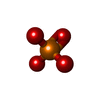 ChemComp-PO4: 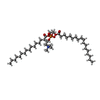 ChemComp-POV:  ChemComp-CLR:  ChemComp-HOH: 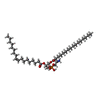 ChemComp-6OU: 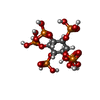 ChemComp-IHP: |
| Source |
|
 Keywords Keywords | TRANSPORT PROTEIN / transport / transport open state |
 Movie
Movie Controller
Controller Structure viewers
Structure viewers About Yorodumi Papers
About Yorodumi Papers




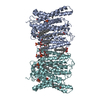

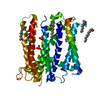

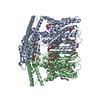
 homo sapiens (human)
homo sapiens (human)